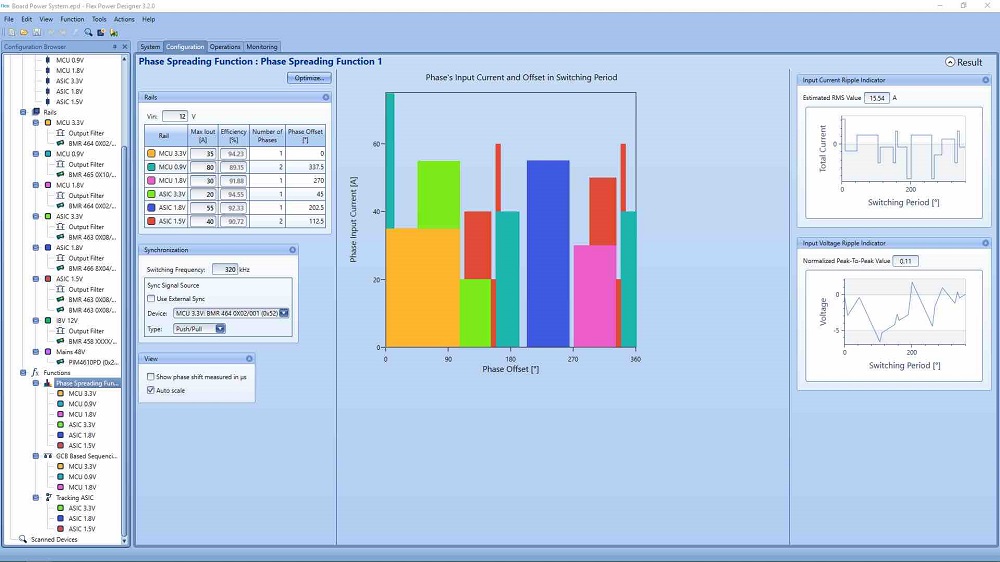By Gina Roos, editor-in-chief
Flex Power Modules, a division of Flex, has released a new version of its Flex Power Designer software that makes it easier for engineers to use for digital power system design. The new version 3.2 will save engineers time when developing their power systems, thanks to new calculation features, while reducing design risk.
The 3.2 version adds a numeric conversion calculator, which makes it easier for designers to calculate linear/Vout and linear/direct formatted values seen from monitoring data. The software also includes a new display address resistor suggestion feature. This calculates suggested values for the resistors SA0/SA1.

To enable more engineers to use the Flex power tool, the software now supports test boards for Flex’s BMR480 and BMR490 DC/DC converters. It also added the ability to monitor common parameters for power products from other vendors. These parameters include input voltage, output voltage, and temperature.
In an earlier v3.0 release, Flex added thermal modeling. This enables designers to simulate thermal behaviors without building hardware, for example, to calculate hotspot temperature and overall system efficiency, said Flex.
But it’s more than converter configuration. “Flex Power Designer isn’t just about converter configuration — it provides an overview of the entire power system, enabling designers to take full advantage of the latest digital power technology,” said Olle Hellgren, director product management and business development, Flex Power Modules, in a statement.
The software enables designers and system architects to track or simulate the efficiency of their entire power system. They can define relationships across power rails, including phase spreading, sequencing, and fault spreading. This means that it’s easier to understand behavior at a system level, which helps reduce time to market, said Flex.
It also enables configuration and simulation of the control loop and configuration and monitoring of digital power modules. The simulation features enable power-stage analysis to optimize tuning as well as visualize design behavior. In addition, engineers can investigate how a system matches up to their design requirements by looking at specific metrics such as transient response, output impedance, and power dissipation, said Flex.
The Flex Power Designer comes bundled with an SMBus tool and sample code for full SMBus control and production programming. It can be downloaded for free at https://flexdigitalpowerdesigner.com.
Advertisement
Learn more about Electronic Products Magazine





